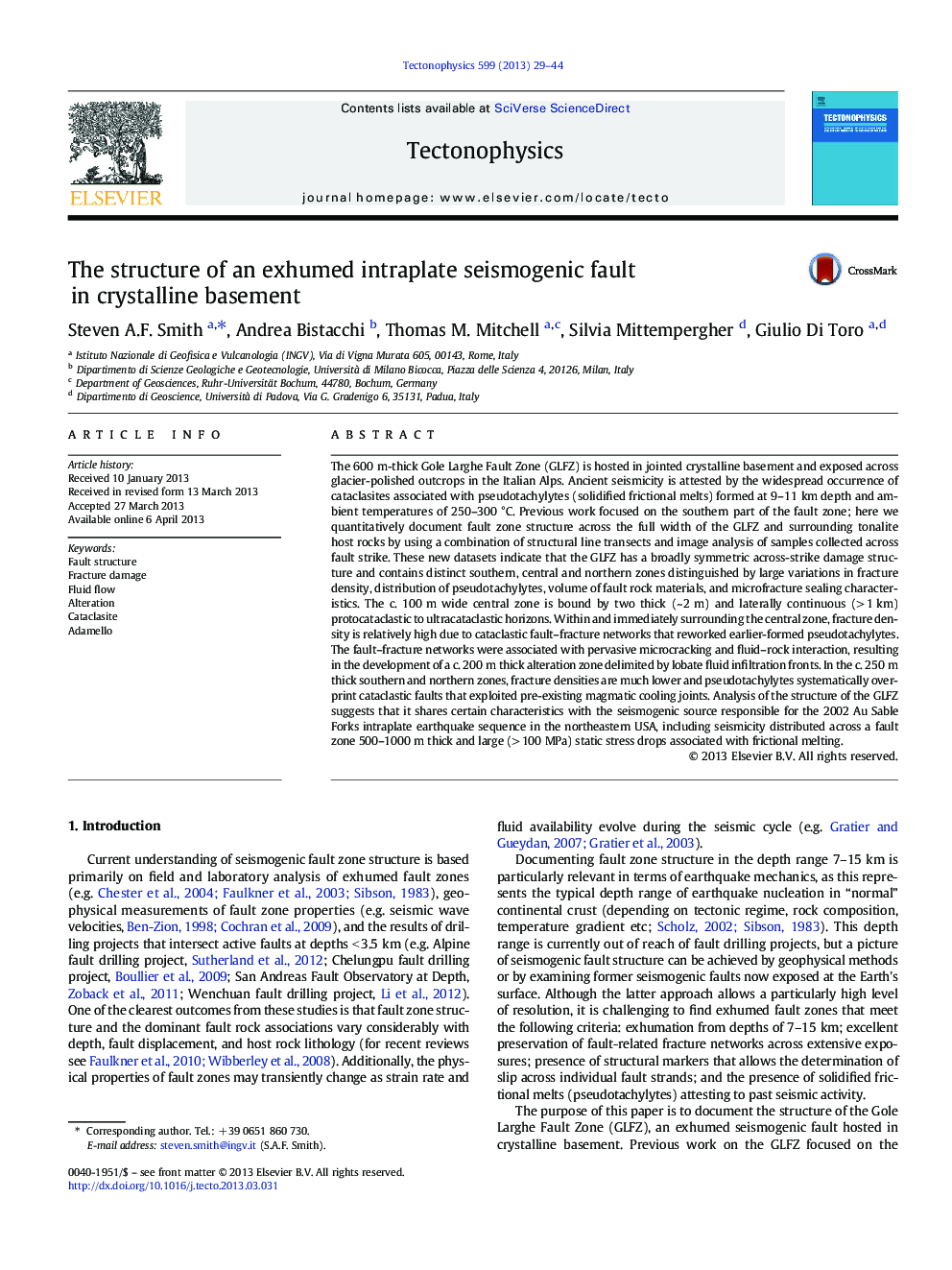| Article ID | Journal | Published Year | Pages | File Type |
|---|---|---|---|---|
| 4692336 | Tectonophysics | 2013 | 16 Pages |
•Structure of an intraplate seismic fault zone in crystalline basement studied•Distinct southern, central and northern zones recognized•Individual zones distinguished by large variations in fracture characteristics•Pervasively altered central zone flanked by lobate fluid infiltration fronts•Comparison made with source of 2002 Au Sable Forks intraplate earthquake sequence
The 600 m-thick Gole Larghe Fault Zone (GLFZ) is hosted in jointed crystalline basement and exposed across glacier-polished outcrops in the Italian Alps. Ancient seismicity is attested by the widespread occurrence of cataclasites associated with pseudotachylytes (solidified frictional melts) formed at 9–11 km depth and ambient temperatures of 250–300 °C. Previous work focused on the southern part of the fault zone; here we quantitatively document fault zone structure across the full width of the GLFZ and surrounding tonalite host rocks by using a combination of structural line transects and image analysis of samples collected across fault strike. These new datasets indicate that the GLFZ has a broadly symmetric across-strike damage structure and contains distinct southern, central and northern zones distinguished by large variations in fracture density, distribution of pseudotachylytes, volume of fault rock materials, and microfracture sealing characteristics. The c. 100 m wide central zone is bound by two thick (~ 2 m) and laterally continuous (> 1 km) protocataclastic to ultracataclastic horizons. Within and immediately surrounding the central zone, fracture density is relatively high due to cataclastic fault–fracture networks that reworked earlier-formed pseudotachylytes. The fault–fracture networks were associated with pervasive microcracking and fluid–rock interaction, resulting in the development of a c. 200 m thick alteration zone delimited by lobate fluid infiltration fronts. In the c. 250 m thick southern and northern zones, fracture densities are much lower and pseudotachylytes systematically overprint cataclastic faults that exploited pre-existing magmatic cooling joints. Analysis of the structure of the GLFZ suggests that it shares certain characteristics with the seismogenic source responsible for the 2002 Au Sable Forks intraplate earthquake sequence in the northeastern USA, including seismicity distributed across a fault zone 500–1000 m thick and large (> 100 MPa) static stress drops associated with frictional melting.
